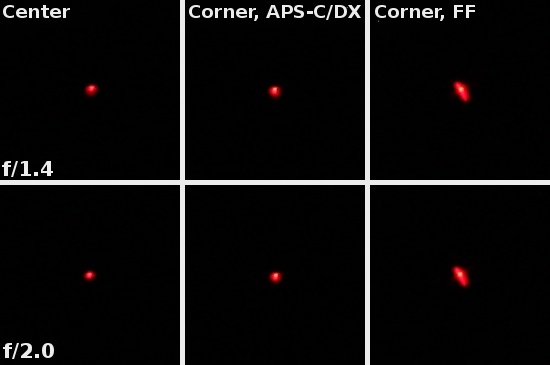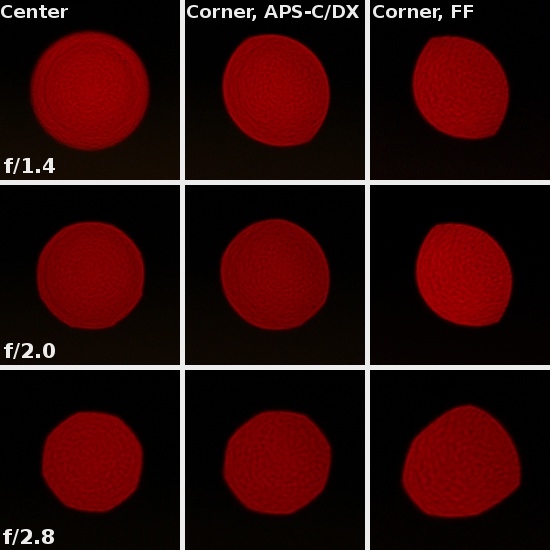Samyang 24 mm f/1.4 ED AS UMC
7. Coma, astigmatism and bokeh

The astigmatism contributes noticeably to the worsening of the image quality. An average difference between horizontal and vertical MTF50 function values amounts to 12% which is a medium result.
Please Support UsIf you enjoy our reviews and articles, and you want us to continue our work please, support our website by donating through PayPal. The funds are going to be used for paying our editorial team, renting servers, and equipping our testing studio; only that way we will be able to continue providing you interesting content for free. |
- - - - - - - - - - - - - - - - - - - - - - - - - - - - - - - - - - - - - - - - - - - - - - - -
Let’s find out how the tested lens renders out-of-focus areas. A defocused image of a point-like diode looks nice. There are no very light or very dark circles or pronounced diversities. It is still far from perfect but the result should be assessed positively. The fact that the image by f/1.4 and by f/2.0 is practically identical in the corner of full frame is a curiosity.







